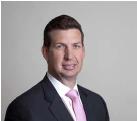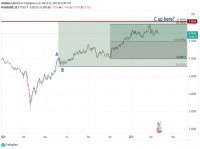|
While many CTA benchmarks experienced negative performance in 2013, Campbell's Managed Futures Program is up just over 8.3%% as of the September reporting period. This past spring we profiled Will Andrews and discussed the transition at Campbell to new leadership and the firm's algorithmic changes. With relative strong risk management during a period of beta market weakness (one of the key components of P (A|B) Method analysis, and after raising nearly $1 billion in assets over the past year, it might be appropriate to catch up with Campbell's president, Mike Harris, and discuss the firm's algorithmic changes the leadership transition process at the firm. Mark Melin: You and Will Andrews are now running Campbell & Company, following a transition that we reported in our May 2013 issue. In that issue we also discussed the evolution of Campbell's approach, and this year the result has been strong outperformance relative to others in the Managed Futures space. How has the transition gone? 
Mike Harris, President of
Campbell & Company,
has overseen significant
changes to the firm's trading algorithm. Mike Harris: Will and I represent a third generation of Campbell Leadership. Campbell is 41 years old, and Keith Campbell ran it for the first 20 years. Then Bruce Cleland took over with Terri Becks, who was our longtime CFO (and became CEO for a short period when Bruce got ill a few years back). They really ran the company for the next 20 years. MM: Campbell started as a trend follower - not a turtle, but one of the original trend followers. Many trend followers have had difficulty, particularly during late spring and through the summer, but Campbell outperformed on a relative basis. Can you address changes to your approach during the last five years or so that may have contributed to this outperformance? MM: You wanted exposure to additional market environments, not just price persistence? "We wanted to add some complementary non-trend strategies to the mix to help provide balance." MH: Absolutely. We wanted to add some complementary non-trend strategies to the mix to help provide some balance. The first area we got into was FX carry - it was a nice complement to what we were doing in trend. Since then, we have been working on developing additional models to create a more diversified portfolio. In the last, say 4 to 5 years, since the 2007-2008 period, we've really built out our suite of non-trend strategies. A lot of our recent outperformance has been due to these strategies. MM: Can you talk about the non-trend strategies in more detail? "We have three alpha buckets within our non-trend portfolio." MH: We have three alpha buckets within our non-trend portfolio. These strategies have been part of the Managed Futures Program for years now, but we rolled out a stand-alone offering earlier this year - we call that PRISM. It's gotten a bit of press recently because of some pretty good performance. One of the buckets in non-trend is Carry - but we take a generalized approach here. It's not just FX, it also trades commodities and fixed income. It's important to note, however, that these are not ‘naïve' carry strategies. We have implemented a number of enhancements (based on lessons learned from the 2007 period) that help to reduce the impact of an adverse spot price movement, and these enhancements have been quite effective. This is one reason why our Carry strategy in the FX sector has done much better than some of our peers this year. In June as an example, if you look at the FX Carry benchmarks, many of them are down between 7 and 10%. Our strategy was only down small and that was because of the techniques we implemented post 2007. The second bucket is Cross Sector, where we use information from one asset class to guide trades in another asset class. And the third bucket is Short-Term Mean Reversion, which is one of the faster strategies in the portfolio. Mean reversion has been the best-performing strategy within Non-Trend for the last few years, as significant macro risks and central bank intervention have led to strong short-term market movements that quickly reverse with each new headline that hits the tape. MM: So how much percentage-wise do each of the three strategies represent within the non-trend portfolio, and within the flagship overall? How does it compare to the allocation to traditional trend following? MH: In the flagship, we've had an 80/20 mix between Trend and Non-Trend since 2009. Within Non-Trend, the allocations are 30% in Carry, 30% in Cross Sector and 40% in Short-Term Mean-Reversion. In our flagship, the investment objective is Enhanced Trend Following - we aim to provide performance that is correlated to the industry benchmarks, but enhanced by allocations to uncorrelated strategies. That is exactly what has happened for the last few years, particularly this year. With a 20% allocation to non-trend, the portfolio benefits significantly from the diversification, but still retains the same trend following ‘flavor'. I should also mention that we've made quite a few improvements to our suite of trend following strategies over the last few years. For example, we've added several new types of trend following. Without getting into too much detail, I'll just mention that we're doing trend following on a sector level and a factor level. We've also got adaptive strategies, which seek to adjust exposure to lookback periods. Another example is a significant emphasis on time horizon diversification, which we enforce in the portfolio construction process. We've heard a lot of chatter recently about the proliferation of shorter-term strategies - that there are lots of programs out there that have shortened their lookback periods to more effectively capture the short-term risk on/risk off, or taper on/taper off, trends. But what we are experiencing in the trend space this year is very different - it's the longer-term trend models that have been the best performers. The nice thing about the longer lookbacks is you don't get whipsawed in and out of positions. I'm not suggesting that long-term strategies are the way to go - they may or may not be the best performer next year, or even next month. We just believe in the diversity of having short, medium and long-term lookbacks represented in the portfolio in a material way. MM: Is the time horizon diversification what has driven your outperformance this year or the diversified strategy set? "We tend to have a bigger exposure to commodities than many of our peers, and this has been a big source of recent profits." MH: Time horizon is part of it, but it's really been more of a general diversification story. Our non-trend strategies have done extremely well this year. While we have a balanced approach by time horizon, we also have a balanced approach by sector - we tend to have a bigger exposure to commodities than many of our peers, and this has been a big source of recent profits. That is one benefit of being the size we are - at $3.2 billion in assets, we are big enough to have a world-class technology infrastructure, with 140 employees in our own building and access to tremendous amounts of data and technology, but at the same time we are not so big that we can't have a substantial exposure to the commodity markets. At our size and up to $10 billion or so, we can have a meaningful footprint in shorter-term strategies and less liquid markets like commodities. Our flagship is up about 9% net through September, while benchmark indices are down 2-3%. I think we played defense really well - we had a great start to the year, but I'm particularly proud of the fact that we only gave back 2.5% from May to August, when the industry was really struggling. A lot of CTAs made money in the first four months, but many of them gave it all back during the summer, and in some cases gave back that and even more. Our short-term strategies, both in Trend and Non-Trend, were very reactive to the shift in May/June - we were able to turn our interest rate position very quickly after Bernanke said "T-word" on May 22nd. MM: So at your size, are there niche markets you can still get into? MH: We could, but it doesn't necessarily make sense from a liquidity standpoint, and also when you consider the impact of transaction costs. When you get into some of the really, really small markets, your transaction costs start to rise exponentially. Liquidity can also be very patchy - you can be in a position where a reversal comes and you need to get out, but if the liquidity isn't there you'll end up giving back all your profits. Very niche markets also aren't going to move the needle from a P&L standpoint, and add a significant amount of operational complexity. Call me a cynic, but I think that some firms like to add as many markets as possible so they can highlight it in their marketing brochure - so they can say "we trade 150-200 markets." At Campbell, we trade about 85 markets and we think that's a good mix for us right now.
Michael Harris Background: Michael Harris joined Campbell & Company in July 2000 and was appointed President in October 2012. Mr. Harris formerly held the positions of Deputy Manager of Trading in 2004, Director of Trading in 2006, and was appointed to the firm's Investment Committee in March 2010. Mr. Harris previously worked as a futures and options broker for Refco Inc. (NY) from 1999 to 2000 and within the Sales and Product Development groups at Morgan Stanley Managed Futures from 1997 to 1999. Mr. Harris attended Gettysburg College in Pennsylvania and received a B.A. with honors in Economics and Japanese Studies and also studied abroad at Kansai Gaidai University in Osaka, Japan. He is a regular contributor on number of financial networks such as CNBC, Bloomberg and Fox Business and has been featured in numerous industry publications. Mr. Harris was recently elected to the Board of Directors of the Managed Funds Association. |
|
This article was published in Opalesque Futures Intelligence.
|





 RSS
RSS











